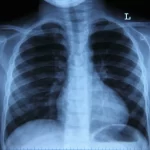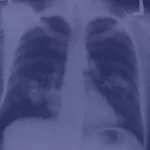Toxic Water at Camp Lejeune: A Historical Tragedy
Camp Lejeune, a prominent United States Marine Corps base in North Carolina, is infamous for a water contamination crisis that spanned several decades. This environmental disaster primarily impacted the base's drinking and bathing water sources, marking it as one of the most significant contamination incidents in U.S. history. From the 1950s through the 1980s, Camp Lejeune's water was tainted with hazardous chemicals, posing severe health risks to military personnel, their families, and civilian workers.
Decades of Contamination at Camp Lejeune
The contamination at Marine Corps Base Camp Lejeune involved a variety of volatile organic compounds (VOCs) such as trichloroethylene (TCE), perchloroethylene (PCE), benzene, and vinyl chloride. These substances are known to cause serious health issues, including various forms of cancer, reproductive disorders, and other life-threatening illnesses. The source of the contamination was multifaceted, involving leaking underground storage tanks, industrial spills, and improper disposal practices. The affected wells supplied water to base housing, schools, and recreational facilities, unknowingly exposing thousands to dangerous toxins.
Health Risks Linked to Contaminated Water
The toxic chemicals in Camp Lejeune's water have been associated with an increased risk of numerous diseases. These health risks extend to those who lived or worked on the base, including U.S. Marines, active-duty service members, reservists, civilian employees, and their families. Chronic exposure to the contaminated water has been linked to serious health conditions such as bladder cancer, kidney cancer, liver cancer, myelodysplastic syndromes, and non-Hodgkin's lymphoma. Prenatal exposure has also raised concerns about birth defects and other long-term health consequences.
The Aftermath and Cleanup Efforts
After the contamination was discovered, the U.S. Marine Corps and other relevant authorities initiated cleanup efforts at Camp Lejeune to mitigate further exposure. Despite these efforts, many individuals had already been exposed to toxic water long before the cleanup began. As a result, veterans, reservists, and their families who were stationed at Camp Lejeune between August 1953 and December 1987 may now be entitled to compensation for their suffering.
Eligibility for Compensation
If you or a family member were stationed at Camp Lejeune and were exposed to the contaminated water, you may be eligible for compensation benefits. The criteria for eligibility include:
- Service Duration: You or your family member must have served at Camp Lejeune for at least 30 cumulative days between August 1953 and December 1987.
- Discharge Status: You did not receive a dishonorable discharge when separated from the military.
- Medical Diagnosis: You or your loved one must have been diagnosed with an eligible disease linked to the water contamination at Camp Lejeune.
Diseases Linked to Camp Lejeune's Water Contamination
Several illnesses have been scientifically linked to exposure to the toxic water at Camp Lejeune. If you or a family member have been diagnosed with one of the following conditions, you may be entitled to compensation:
- Adult leukemia
- Aplastic anemia and other myelodysplastic syndromes
- Bladder cancer
- Kidney cancer
- Liver cancer
- Multiple myeloma
- Non-Hodgkin’s lymphoma
- Parkinson’s disease
- Cardiac Defects
- Breast Cancer
- Esophageal Cancer
- Lung Cancer
- Infertility
- Miscarriage
- Kidney Failure
- Scleroderma
- Hepatic Steatosis
The PACT Act and Legal Support
In response to the health crisis at Camp Lejeune, Congress passed the PACT Act in August 2022, nearly 40 years after the contamination was first identified. This legislation, which includes the Camp Lejeune Justice Act, provides judicial relief to victims of the base's water contamination. The act also aims to offer health coverage to millions affected by toxic exposure during military service, including those impacted by burn pits in Afghanistan and Iraq.
The Road to Compensation
Under the PACT Act, individuals exposed to Camp Lejeune's toxic water have a structured pathway to seek compensation. The act establishes a process that requires affected individuals to file an administrative claim before pursuing a lawsuit. The law mandates a 6-month administrative claim process to ensure that all claims are carefully reviewed. Additionally, there is a 2-year deadline for filing claims, making it crucial for affected individuals to act swiftly.
Health Care and Disability Compensation
Those exposed to Camp Lejeune's contaminated water may be entitled to various benefits, including health care coverage, disability compensation, and financial restitution for their suffering. Covered health conditions include cancers such as bladder, kidney, and liver cancer, as well as other serious illnesses. Veterans Affairs (VA) also provides health care and benefits to veterans diagnosed with presumptive conditions related to the toxic exposure at Camp Lejeune.
Documenting Your Exposure and Illness
To establish your claim, it's essential to provide relevant evidence, including medical records, military service records, and base housing documentation. Gathering this information can be complex, but it is crucial in proving the connection between your illness and the toxic exposure at Camp Lejeune. Birth certificates, marriage licenses, and other personal documents may also be required to demonstrate eligibility for compensation.
Legal Representation for Camp Lejeune Victims
Navigating the complexities of filing a claim for compensation can be overwhelming. It is essential to work with a law firm experienced in handling cases related to toxic exposure at military bases. Legal professionals, such as those at Serling & Abramson, P.C., have the expertise to guide you through the process, ensuring that your claim is filed accurately and promptly. They can help you obtain the compensation you deserve for medical expenses, lost wages, and other damages resulting from the exposure.
Medical Evidence and the Role of Scientific Studies
Scientific studies, including the Agency for Toxic Substances and Disease Registry (ATSDR) Cancer Incidence Study, have provided crucial evidence linking water contamination at Camp Lejeune to various cancers and health conditions. These studies underscore the serious health risks posed by the toxic chemicals found in the base's water supply. Medical evidence plays a vital role in supporting claims for compensation, highlighting the importance of regular health check-ups and medical documentation for those affected.
Seeking Justice and Financial Compensation
Victims of Camp Lejeune's water contamination have the right to seek justice through legal action. Filing a claim can result in financial compensation, covering medical expenses, disability benefits, and other associated costs. The process of obtaining compensation can be lengthy, but with the support of experienced attorneys, victims can secure the resources they need to cope with their illnesses and improve their quality of life.
Camp Lejeune Justice Act of 2022 (CLJA)
The Camp Lejeune Justice Act of 2022 (CLJA) was a significant legislative move designed to provide long-overdue relief to veterans and their families who were exposed to contaminated water at Camp Lejeune. Located in Camp Lejeune, North Carolina, this Marine Corps Base and its neighboring Marine Corps Air Station were the sites of extensive water contamination from the 1950s to the 1980s, exposing thousands of military personnel and civilians to hazardous chemicals. The CLJA allows those affected to seek compensation for illnesses related to this exposure, ensuring justice for those who served and lived on Base Camp Lejeune, North Carolina. The **Lejeune Justice Act is a critical path for those seeking redress for the devastating health effects caused by the contaminated water at Camp Lejeune.
Conclusion
The toxic water contamination at Camp Lejeune represents a dark chapter in U.S. military history, affecting the lives of countless individuals who served or lived on the base. If you or a loved one were exposed to the contaminated water at Marine Corps Base Camp Lejeune, it's crucial to understand your rights and take action. With the passing of the PACT Act, there is now a pathway for victims to seek compensation for the health conditions caused by this exposure.
Contact Serling & Abramson, P.C. for a free case evaluation to learn more about your eligibility and the steps you can take to secure the compensation you deserve. Don't let time run out on your opportunity to pursue justice and financial support for the harm caused by Camp Lejeune's toxic water.
















